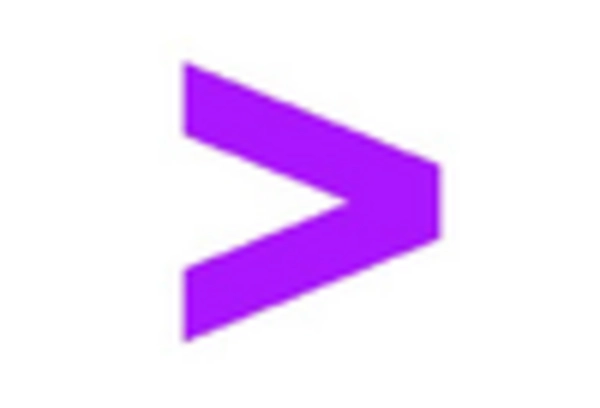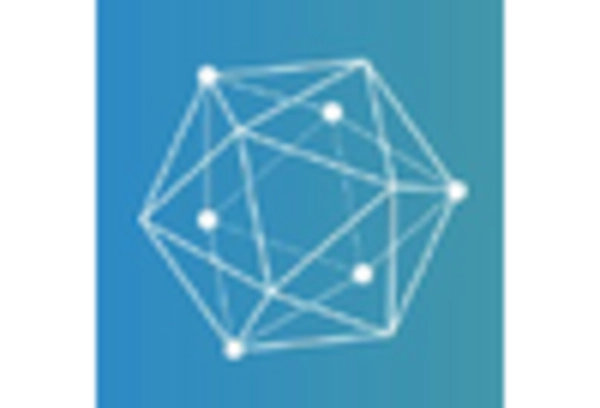Regulatory Support and Frameworks
The Enterprise Grade DLT Market is benefiting from a growing recognition of the need for regulatory support and frameworks that govern the use of distributed ledger technologies. Governments and regulatory bodies are increasingly developing guidelines that promote the safe and effective implementation of DLT solutions. This regulatory clarity is essential for businesses to navigate compliance challenges and mitigate risks associated with data management. As of October 2025, several jurisdictions have introduced legislation aimed at fostering innovation while ensuring consumer protection. This supportive regulatory environment is likely to encourage investment in DLT technologies, thereby accelerating growth within the Enterprise Grade DLT Market.
Growing Adoption of Smart Contracts
The adoption of smart contracts is emerging as a transformative driver within the Enterprise Grade DLT Market. These self-executing contracts, which are programmed to automatically enforce and execute terms, are gaining traction across various sectors, including finance, real estate, and supply chain management. The ability to automate processes and reduce reliance on intermediaries is appealing to organizations seeking efficiency and cost savings. As of October 2025, the market for smart contracts is expected to grow significantly, with estimates suggesting a valuation of USD 10 billion by 2027. This growth is indicative of the broader acceptance of DLT technologies and their potential to revolutionize traditional business practices.
Advancements in Interoperability Solutions
Interoperability remains a critical driver within the Enterprise Grade DLT Market, as organizations seek to connect disparate systems and enhance data sharing capabilities. The development of standardized protocols and frameworks is facilitating seamless integration of DLT with existing IT infrastructures. This trend is underscored by the increasing number of collaborations among technology providers, which aim to create interoperable solutions that can cater to diverse business needs. As a result, the market is expected to witness a compound annual growth rate of approximately 30% over the next few years. Enhanced interoperability not only streamlines operations but also fosters innovation, allowing businesses to leverage the full potential of DLT technologies.
Rising Demand for Transparency and Traceability
The Enterprise Grade DLT Market is experiencing a notable surge in demand for transparency and traceability across various sectors. Organizations are increasingly recognizing the value of DLT in enhancing supply chain visibility and ensuring data integrity. According to recent estimates, the market for DLT solutions is projected to reach USD 23 billion by 2025, driven by the need for secure and verifiable transactions. This trend is particularly evident in industries such as finance, healthcare, and logistics, where stakeholders seek to mitigate fraud and enhance accountability. As businesses strive to build trust with consumers and partners, the adoption of DLT technologies is likely to become a cornerstone of operational strategy, thereby propelling growth within the Enterprise Grade DLT Market.
Increased Investment in Research and Development
Investment in research and development is a pivotal driver for the Enterprise Grade DLT Market, as organizations strive to innovate and enhance their DLT offerings. Companies are allocating substantial resources to explore new use cases and improve the scalability and efficiency of DLT solutions. This trend is reflected in the rising number of patents filed related to DLT technologies, indicating a robust interest in advancing the field. Furthermore, industry leaders are collaborating with academic institutions to foster innovation and drive technological advancements. As a result, the market is poised for significant growth, with projections suggesting a potential market size of USD 30 billion by 2026, driven by these R&D initiatives.

















Leave a Comment